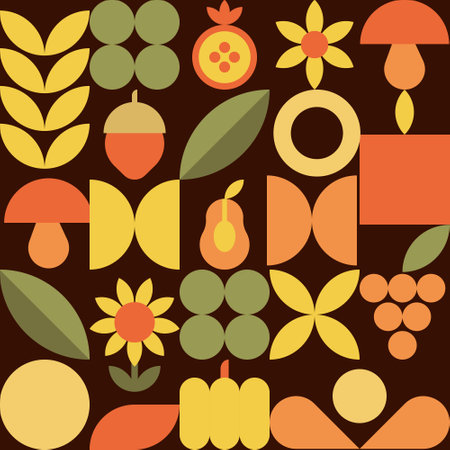1. Understanding Pollinators and Their Importance
When planning a vibrant, pollinator-friendly garden in the U.S., its essential to understand who pollinators are and why they matter. Pollinators include bees, butterflies, hummingbirds, beetles, and even some bats and flies. These creatures play a crucial role in helping plants reproduce by transferring pollen from one flower to another. Without them, many of the fruits, vegetables, and nuts we enjoy would be in short supply.
In American ecosystems and agriculture, pollinators are vital for maintaining biodiversity and supporting food production. According to the USDA, over 75% of flowering plants rely on animal pollinators, and about one-third of the food we eat depends on their work. That includes favorites like apples, blueberries, almonds, and squash.
Common Pollinators in American Gardens
| Pollinator | Description | Favorite Plants |
|---|---|---|
| Bees | Includes honeybees, bumblebees, and native solitary bees. They are the most effective pollinators. | Lavender, sunflowers, coneflowers, bee balm |
| Butterflies | Colorful insects that prefer flat blossoms where they can land easily. | Milkweed, zinnias, black-eyed Susans |
| Hummingbirds | Tiny birds with fast wings that love tubular flowers full of nectar. | Columbine, salvia, trumpet vine |
Why Pollinators Need Our Help
Unfortunately, pollinator populations are declining due to habitat loss, pesticide use, climate change, and disease. This is why creating a garden that supports them is so important—not just for your backyard beauty but for the health of local ecosystems and our national food supply.
How Your Garden Makes a Difference
A garden filled with colorful blooms throughout the growing season offers food and shelter to a wide range of pollinators. By selecting native plants suited to your region and avoiding harmful chemicals, you help create a safe haven where these essential creatures can thrive.
2. Choosing a Vibrant Color Palette for Your Garden
When designing a pollinator-friendly garden, color isn’t just about beauty—it’s also one of the most effective ways to attract bees, butterflies, hummingbirds, and other helpful pollinators. Different colors can appeal to different species, so choosing a variety of hues will help you support a wide range of pollinators throughout the growing season.
Why Color Matters to Pollinators
Pollinators rely on visual cues to find flowers that offer nectar and pollen. Bright, contrasting colors make it easier for them to locate blooms from a distance. For example, bees are drawn to blue, purple, and yellow flowers, while hummingbirds love red and orange shades. Butterflies often prefer bright pinks and purples.
Selecting Colors for Seasonal Appeal
A great way to keep your garden attractive all year long is by planting flowers that bloom in different seasons with a range of vibrant colors. This ensures that pollinators have food sources from early spring to late fall.
Color Preferences by Pollinator Type
| Pollinator | Preferred Flower Colors |
|---|---|
| Bees | Blue, Purple, Yellow, White |
| Butterflies | Bright Pink, Red, Orange, Purple |
| Hummingbirds | Red, Orange, Pink |
| Moths (Evening) | Pale or White (visible at dusk) |
Creating a Balanced Color Scheme
To create a visually pleasing yet functional garden design, aim for a balanced mix of warm and cool tones. You can group similar colors together for bold impact or alternate between contrasting colors to create dynamic visual interest. Consider using native plants in various shades to ensure they thrive in your local climate while supporting regional pollinators.
Tips for Designing with Color:
- Group in clumps: Planting the same color flower in groups makes it easier for pollinators to spot them.
- Layer by height: Use taller plants with bold colors in the back and shorter plants in front for visual depth.
- Repeat color patterns: Repeating colors throughout your garden ties the design together and keeps pollinators moving through the space.
- Add seasonal bloomers: Choose spring, summer, and fall bloomers in different colors to maintain year-round attraction.
Nurturing Beauty and Biodiversity Together
A thoughtfully chosen color palette doesn’t just enhance the beauty of your outdoor space—it plays an important role in supporting local ecosystems. With a variety of flower colors blooming throughout the year, you’ll attract more types of pollinators and enjoy a lively, colorful garden season after season.

3. Selecting Native and Pollinator-Friendly Plants
When creating a pollinator-friendly garden with a vibrant color scheme, choosing the right plants is key. Native plants are an excellent choice because they are adapted to local climates, require less maintenance, and provide essential resources for native pollinators like bees, butterflies, hummingbirds, and moths. By using U.S. native species, you not only support local ecosystems but also enjoy a resilient and beautiful garden that thrives year after year.
Why Choose Native Plants?
Native plants have evolved alongside local pollinators, making them a natural fit. They typically need less water, fertilizer, and pesticides than non-native species. Plus, they tend to be more resistant to pests and diseases. This means less work for you and more food and habitat for pollinators.
Benefits of Native Plants:
- Low Maintenance: Adapted to local soil and weather conditions
- Water Wise: Require less irrigation once established
- Pollinator Support: Provide nectar, pollen, and shelter
- Seasonal Interest: Bloom in different seasons, offering continuous color
Colorful Native Plants by Region
Selecting native plants based on your region ensures the best results. Here’s a quick guide to colorful U.S. native plants that attract pollinators:
| Region | Plant Name | Bloom Color | Pollinators Attracted |
|---|---|---|---|
| Northeast | Bee Balm (Monarda didyma) | Red, Pink, Purple | Bees, Hummingbirds, Butterflies |
| Southeast | Black-Eyed Susan (Rudbeckia hirta) | Bright Yellow | Bees, Butterflies |
| Midwest | Purple Coneflower (Echinacea purpurea) | Purple-Pink | Bees, Butterflies |
| Southwest | Desert Marigold (Baileya multiradiata) | Golden Yellow | Nativ e Bees, Moths |
| West Coast | California Poppy (Eschscholzia californica) | Orange, Yellow | Bees, Hoverflies |
| Pacific Northwest | Lupine (Lupinus spp.) | Purple, Blue, White | Bumblebees, Butterflies |
Cohesive Color & Seasonal Blooms
A vibrant garden doesn’t mean all colors at once—it means thoughtful layering. Choose a mix of plant species that bloom in spring, summer, and fall to ensure your garden always has color and offers food throughout the growing season.
Example Seasonal Planting Plan:
| Season | Plant Example | Main Color(s) |
|---|---|---|
| Spring | Lupine (Lupinus spp.) | Purple/Blue/White |
| Summer | Purple Coneflower (Echinacea purpurea) Bee Balm (Monarda didyma) |
Purple-Pink / Red-Pink-Purple |
| Fall | Aromatic Aster (Symphyotrichum oblongifolium) Goldenrod (Solidago spp.) |
Purple / Yellow-Gold |
Create Layers for More Impact (and More Pollinators!)
Diversify your planting by including groundcovers, mid-height flowers, and taller shrubs or grasses. This layering not only adds visual depth but also accommodates different types of pollinators—some prefer low flowers while others visit taller blooms.
- Tall Plants: Joe Pye Weed, Sunflowers (for butterflies & bees)
- Medium Height: Coneflowers, Milkweed (for monarchs)
- Groundcovers: Creeping Thyme or Phlox (great for small native bees)
This thoughtful selection of native plants will help build a colorful garden that invites pollinators all season long while being easy to care for—and deeply rewarding to watch grow.
